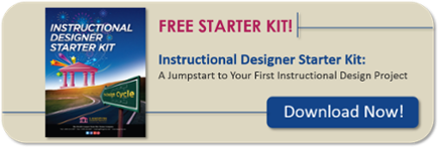Photo by: Jeff Sheldon via Unsplash
There are many reasons to conduct on-the-job training: a very small number of people need training, the work cannot be simulated effectively, or the skills don’t lend themselves to other forms of instruction. Sadly, a lot of on-the-job training is ineffective. It’s often called “sit with Nellie.” An employee spends time with one of the top performers, with no plan or goal laid out. Somehow that person is expected to learn the skills in question through something akin to osmosis.
Here are four instructional design tips that will produce better outcomes for on-the-job training.
1. Produce a List of Job Skills to Teach
A program may focus on specific parts of a job, or the entirety of the job. In either case, produce a list of the job tasks that will be taught. This provides many benefits. It gives direction to the trainer and the learner, focuses the efforts on skills rather than knowledge, helps track learning progress, and allows the trainer to note areas of strength and where more improvement is needed.
2. Suggest Presentation Methods
Many experts resort to explanation as their preferred means of presenting a process. This is known in training as the lecture method. The benefit of on-the-job training is that you can rely more often on demonstration as a presentation method. There are other techniques available as well. You can use discussion when the learner has some experience in the skill area. Reading is popular, especially when job documentation exists. As the instructional designer, you should provide suggestions on how to present each of the skill areas in your teachable skills list. This improves the odds the right methods will be used to cover each skill.
3. Suggest Practice Activities
Training should always include a practice component, where the learner actually develops the skills desired. On-the-job training is no exception. For each skill in your list, suggest ways the learner can practice. As the instructional designer you should include directions the trainer can provide to the learner to set both up for success. Outline items such as materials needed, information required, time available, and the means for determining success in the exercise.
4. Provide Coaching Guidelines
Good job skills do not mean good teaching skills. The person running on-the-job training will need both. Help the trainer facilitate learning by providing some coaching tips. Include items on how to ask questions, answer questions, give clear directions, monitor exercises, manage time, and give feedback. You can incorporate these tips directly into the document you’ve used to cover the previous items.
On-the-job training is a powerful tool when used correctly. The trick is to make sure it isn’t just “sit with Nellie.” Use the instructional design tips above to provide structure, guidance, and focus so both the trainer and the learner is successful. Happy (on-the-job) training!

